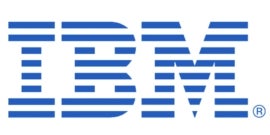
If you’re considering a career in data management or are a non-data professional preparing for a data migration project, you’ll need to become familiar with ETL, or extract, transform and load.
SEE: Data migration testing checklist: Through pre- and post-migration (TechRepublic Premium)
The ETL process moves data from its source(s) into another system or database where it can be used for analysis and decision-making purposes. In this brief guide to ETL, learn more about how it works, the impact it can have on business operations and top ETL tools to consider using in your business.
Jump to:
ETL definition
ETL is a process in data migration projects that involves extracting data from its original source, transforming it into a suitable format for the target database and loading it into the final destination. ETL is vital for ensuring accurate and efficient data migration outcomes since it allows organizations to convert all of their existing data into more easily managed, analyzed and manipulated formats.
How does ETL work?
The ETL three-step process is a crucial piece of data migration projects. Here’s how it works, broken down into each of its three main components:
Step one: Extract
The extract step is the first part of ETL. It involves gathering relevant data from various sources, whether homogeneous or heterogeneous. These data sources may use different formats, such as relational databases, XML, JSON, flat files, IMS and VSAM, or any other format obtained from external sources by web spidering or screen scraping.
SEE: Cloud data storage policy (TechRepublic Premium)
In many solutions, streaming these data sources directly to the destination database may be possible in some cases when intermediate data storage is unnecessary. Throughout this step, data professionals must evaluate all extracted data for accuracy and consistency with the other datasets.
Step two: Transform
Once data is extracted, the next step of the ETL process is transform. Transformations are a set of rules or functions applied to extracted data to make it ready for loading into an end target. Transformations can also be applied as data cleansing mechanisms , ensuring only clean data is transferred to its final destination.
Transformations can be tricky and complex because they may require different systems to communicate with one another. This means compatibility issues could arise, for example, when considering character sets that may be available on one system but not another.
SEE: Cloud data warehouse guide and checklist (TechRepublic Premium)
Multiple transformations may be necessary to meet business and technical needs for a particular data warehouse or server. Some examples of transformation types include the following:
- Encoding free-form values: Mapping “Female” to “F”
- Choosing to load only specific columns: Selecting only “Name” and “Address” from a row
- Normalizing data: Joining first and last names into a single column called “Name”
- Sorting data: Sorting customer IDs by ascending or descending order
- Deriving new calculated values: Computing average products sold per customer
- Pivoting and transposing data: Converting columns into rows
Step three: Load
The last step of ETL is loading transformed information into its end target. Loading could involve an asset as simple as a single file or as complex as a data warehouse.
This process can vary widely depending on the requirements of each organization and its data migration projects.
Top ETL tools
ETL tools are used to migrate data from one system to another, be it a database management system, a data warehouse or even an external storage system. These tools can run in the cloud or on-premises and often come with an interface that creates a visual workflow when carrying out various extraction, transformation and loading processes. Additionally, their versatility allows datasets to be analyzed, cleansed and (re)structured, making them invaluable in most industries today.
SEE: Top data quality tools (TechRepublic)
With plenty of options available on the market, organizations can select an ETL tool that is suited to their needs in terms of capability and complexity. Below are our top five picks for cloud-based, on-premises and hybrid, and open-source ETL tools.
AWS Glue

AWS Glue is a strong cloud ETL option for companies already familiar with SQL databases and Amazon storage services. It’s powerful enough to clean, validate, organize and load data from diverse sources like streaming data and clickstreams as well as processing jobs with either Scala or Python.
Job runs can be scheduled regularly or when new data is available. Jobs are also managed through AWS Glue, which enables businesses to scale up or down when needed, ultimately allowing them to operate at peak efficiency. In addition, by completely integrating with other AWS systems and processes, this tool further simplifies the ETL process by unifying previously disjointed operations across multiple platforms.
Azure Data Factory

Boasting an impressive suite of features, Azure Data Factory is a pay-as-you-go cloud-based tool that can quickly scale ETL processing and storage to meet businesses’ data needs. Users benefit from a no-code graphical user interface for simple tasks and a code-based option for data professionals.
With its expansive range of connectors — including AWS, DB2, MongoDB, Oracle, MySQL, SQL, SyBase, Salesforce and SAP — Azure Data Factory can support a variety of data migration and integration project goals.
IBM DataStage

IBM DataStage is a powerful ETL tool that forms part of the IBM Information Server platform. Utilizing a client/server model allows for data integration from multiple sources in large volumes and via different platforms, including Intel, UNIX, Linux or even IBM mainframe.
An impressive range of features includes extended metadata management, enterprise connectivity and high-performance parallel framework capabilities. As such, IBM DataStage is well-suited to large enterprises running various clouds and companies with on-premises data centers that wish to maximize their ETL capabilities.
Talend Open Studio

Talend Open Studio is an open-source, user-friendly tool with a graphical user interface to facilitate data and application connections. It comes packed with a library of more than 900 connectors, enabling users to access corporate data from sources including Excel, Dropbox, Oracle, Salesforce and Microsoft Dynamics.
SEE: Job description: ETL/data warehouse developer (TechRepublic Premium)
Additionally, it can handle many forms of structured or unstructured data from relational databases and software applications. Data professionals can use Talend Open Studio with on-premises, cloud and multicloud platforms, so it’s well-equipped for companies that work in hybrid computing modes. By implementing an effective ETL process, non-data professionals and less-experienced data management professionals can ensure a successful transition between databases with no errors or inconsistencies.
Read next: Best ETL tools and software (TechRepublic)







